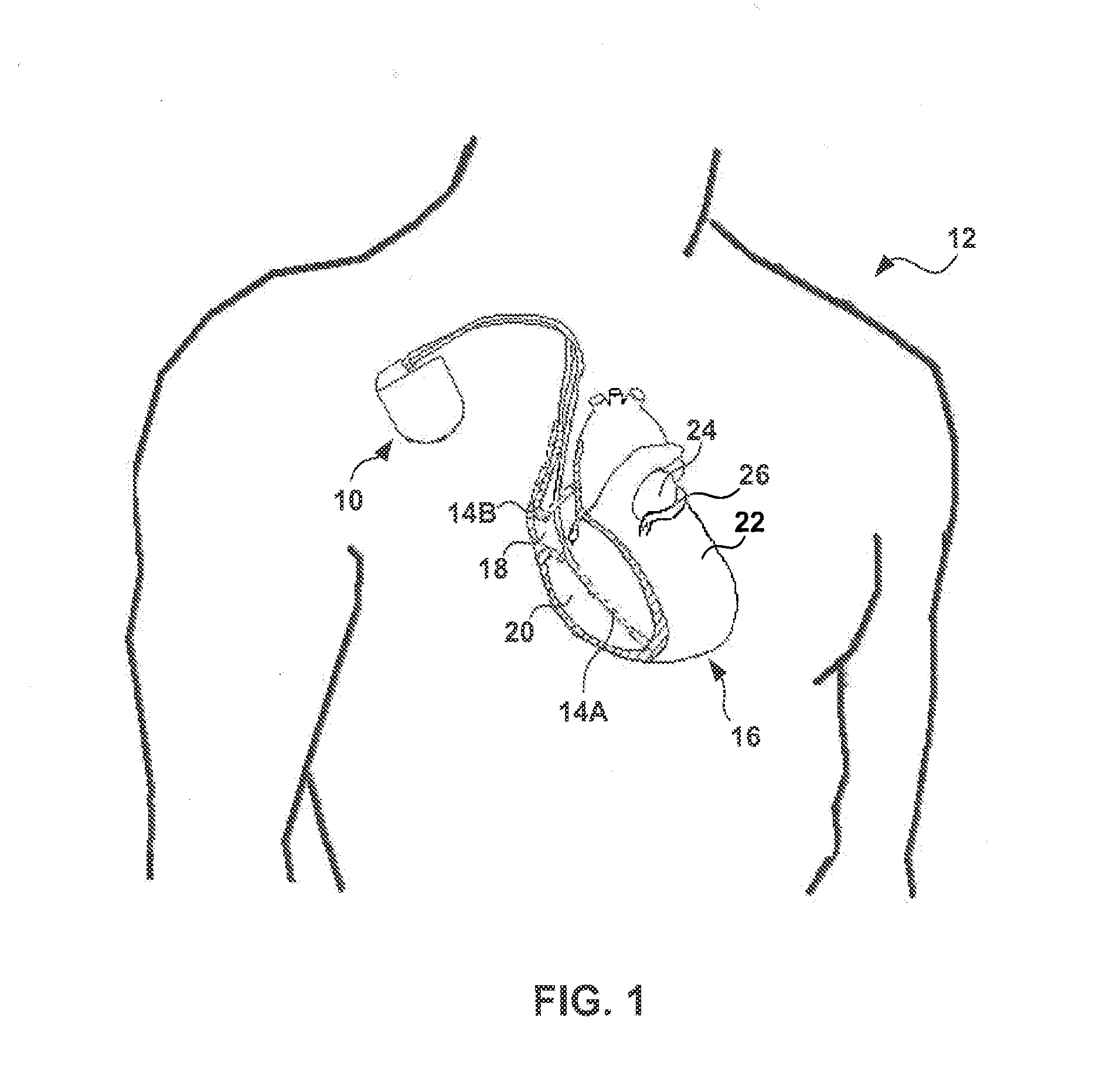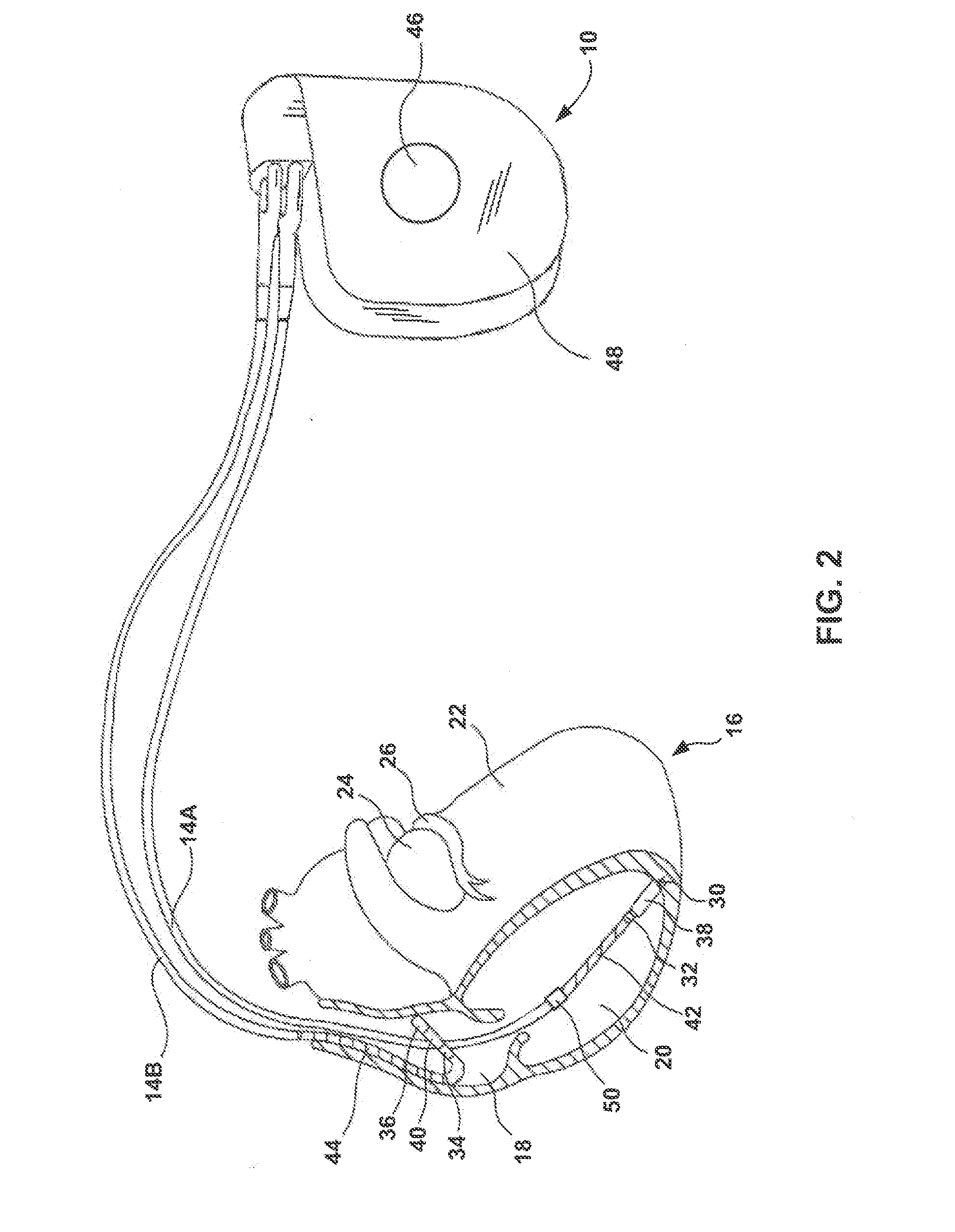Reducing inappropriate delivery of therapy for suspected non-lethal arrhythmias
a non-lethal arrhythmia and inappropriate delivery technology, applied in the field of cardiac pacing, can solve the problems of short vcls that falsely indicate vf or vt, ineffective termination of svt, significant patient discomfort or induce vf or vt, etc., to reduce the unnecessary occurrence of patient discomfort, avoid or delay the delivery of a defibrillation, and reduce the inappropriate delivery of therapy
- Summary
- Abstract
- Description
- Claims
- Application Information
AI Technical Summary
Benefits of technology
Problems solved by technology
Method used
Image
Examples
Embodiment Construction
[0029]FIG. 1 is a conceptual diagram illustrating an example implanted medical device (IMD) 10 that reduces inappropriate delivery of therapy for suspected non-lethal arrhythmias implanted within a patient 12. In exemplary embodiments, IMD 10 takes the form of a multi-chamber pacemaker with cardioversion and / or defibrillation capability. In the exemplary embodiment illustrated in FIG. 1, IMD 10 is coupled to leads 14A and 14B (collectively “leads 14”) that extend into the heart 16 of patient 12. More particularly, right ventricular (RV) lead 14A extends through one or more veins (not shown), the superior vena cava, and right atrium 18, and into right ventricle 20, and right atrial (RA) lead 14A extends through the veins and superior vena cava, and into the right atrium 18 of heart 16.
[0030]IMD 10 senses electrical signals attendant to the depolarization and repolarization of heart 16 and provides pacing pulses via electrodes (not shown) located on leads 14. The electrodes located on...
PUM
 Login to View More
Login to View More Abstract
Description
Claims
Application Information
 Login to View More
Login to View More - R&D
- Intellectual Property
- Life Sciences
- Materials
- Tech Scout
- Unparalleled Data Quality
- Higher Quality Content
- 60% Fewer Hallucinations
Browse by: Latest US Patents, China's latest patents, Technical Efficacy Thesaurus, Application Domain, Technology Topic, Popular Technical Reports.
© 2025 PatSnap. All rights reserved.Legal|Privacy policy|Modern Slavery Act Transparency Statement|Sitemap|About US| Contact US: help@patsnap.com



